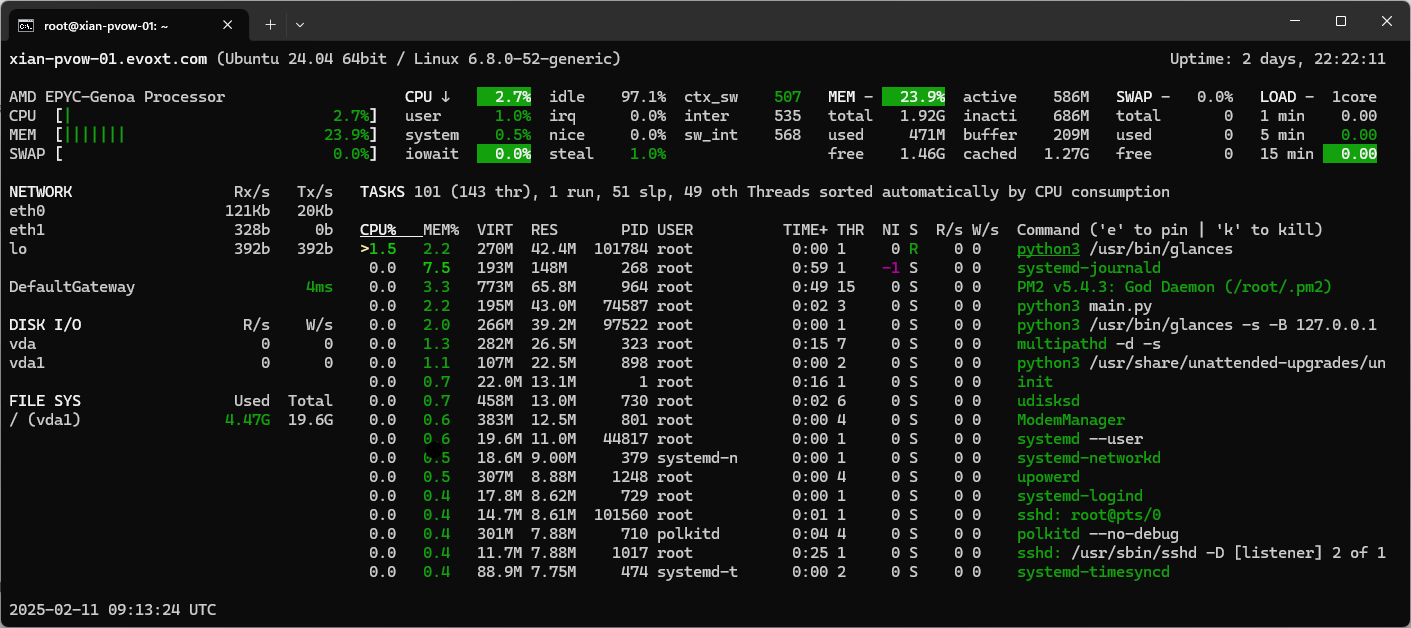
The top command provides real-time insights into your system's performance, displaying CPU, memory, and process statistics.
top
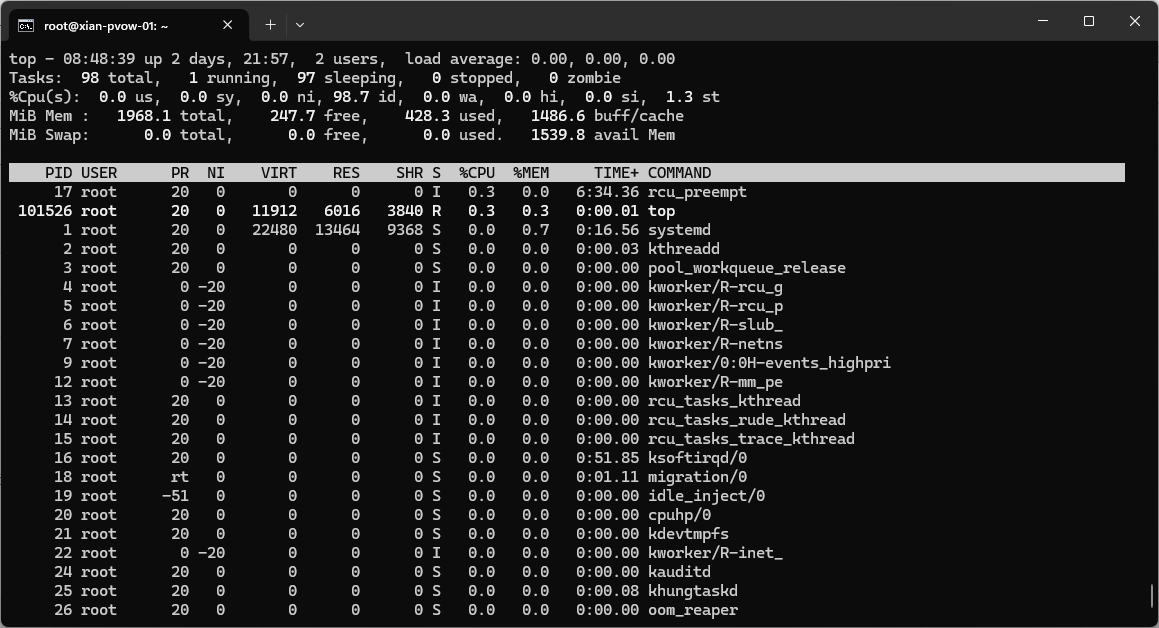
htop provides a user-friendly interface with color-coded statistics, making system monitoring easier.
sudo apt install htop # For Debian/Ubuntu sudo yum install htop # For CentOS/RHEL htop
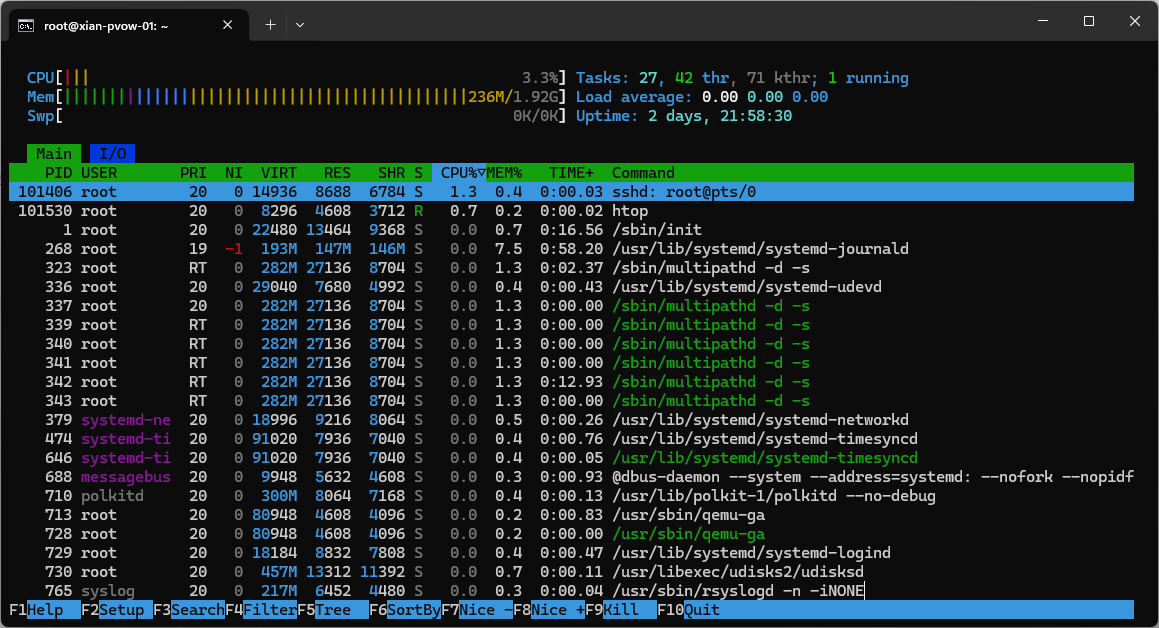
mpstat monitors CPU performance across all cores, providing per-core statistics and overall usage.
sudo apt install sysstat # Debian/Ubuntu sudo yum install sysstat # CentOS/RHEL mpstat -P ALL

The uptime command quickly shows system load and uptime.
uptime
The free command displays total, used, and available memory along with swap usage.
free -m

vmstat provides detailed statistics for memory and I/O operations.
vmstat 1 5

Check available disk space with df in a human-readable format.
df -h

Monitor disk I/O performance using iostat.
iostat -dx 1

Identify large files using the du command.
du -ahx / | sort -rh | head -10
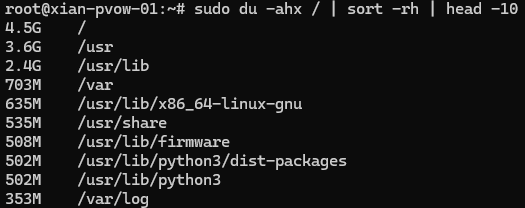
iftop tracks network usage and bandwidth to help identify bottlenecks.
sudo apt install iftop # Debian/Ubuntu sudo yum install iftop # CentOS/RHEL sudo iftop
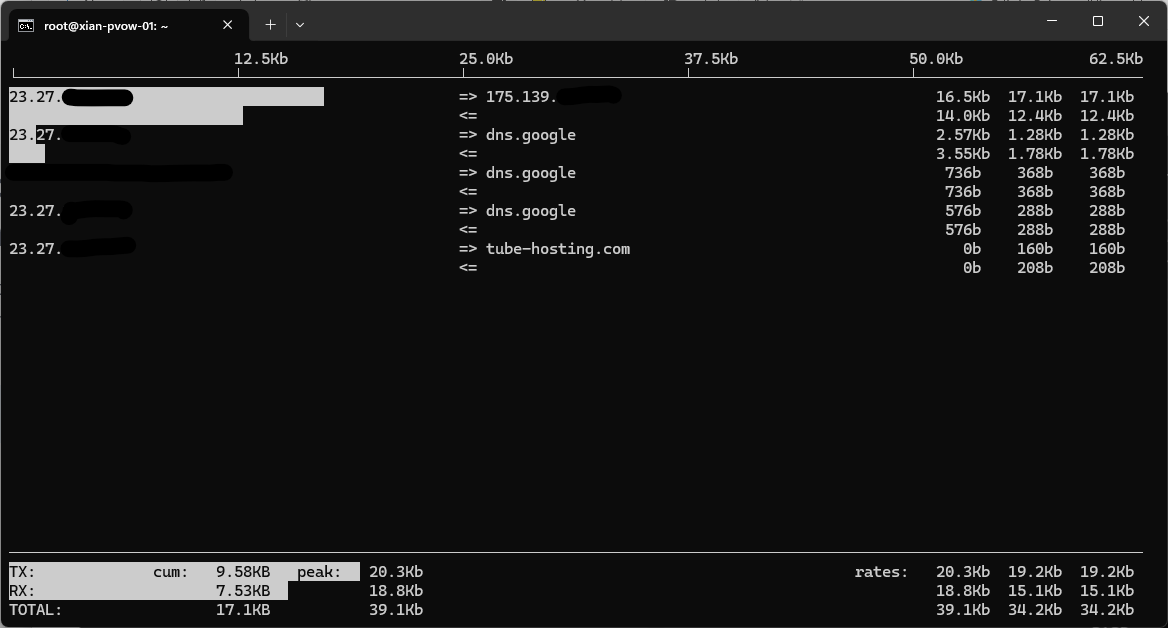
View active network connections using netstat or ss.
netstat -tulnp

ss -tulnp

Glances offers a comprehensive overview of system resources, complementing your monitoring toolkit.
sudo apt install glances # Debian/Ubuntu sudo yum install glances # CentOS/RHEL glances
